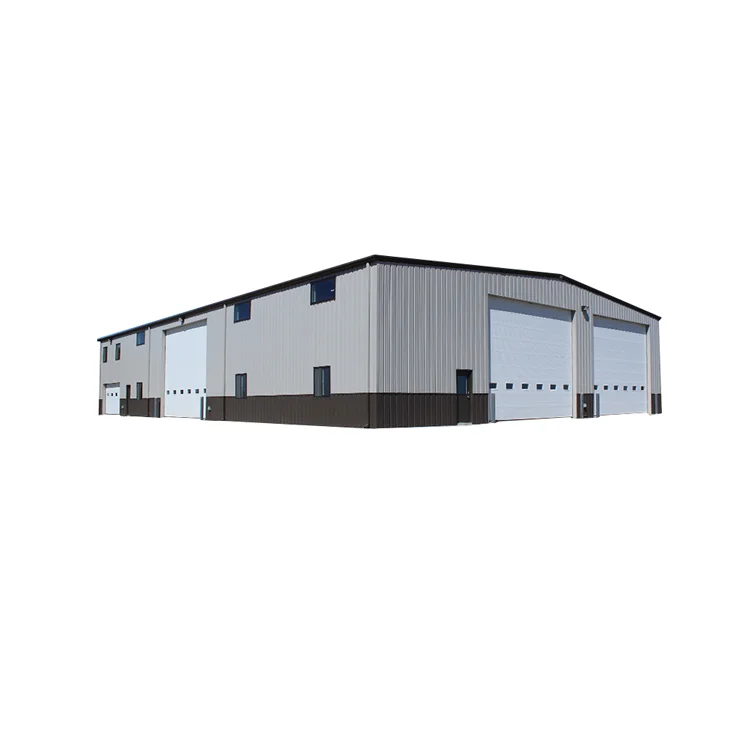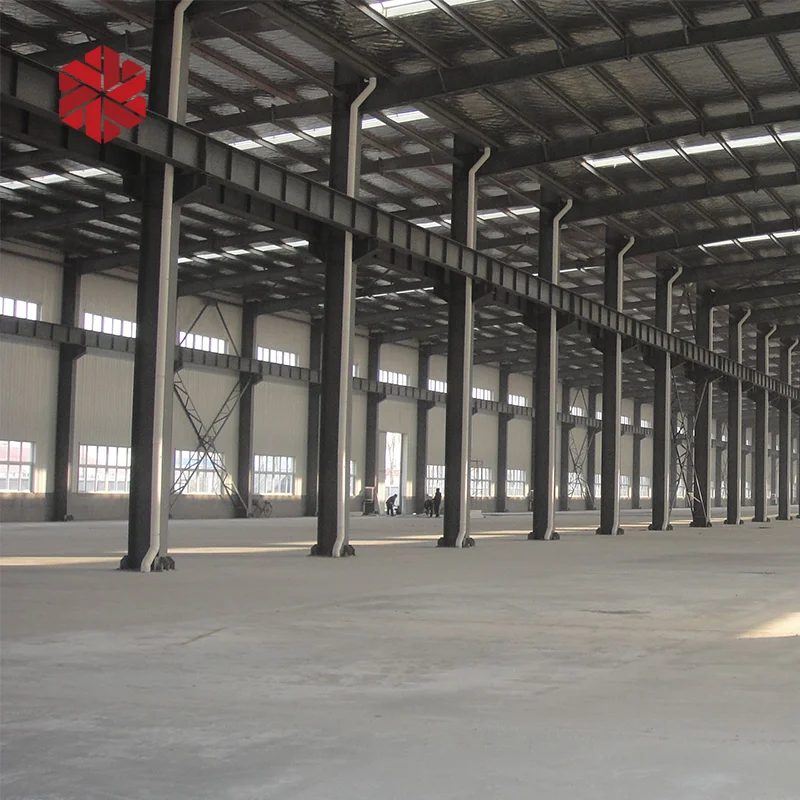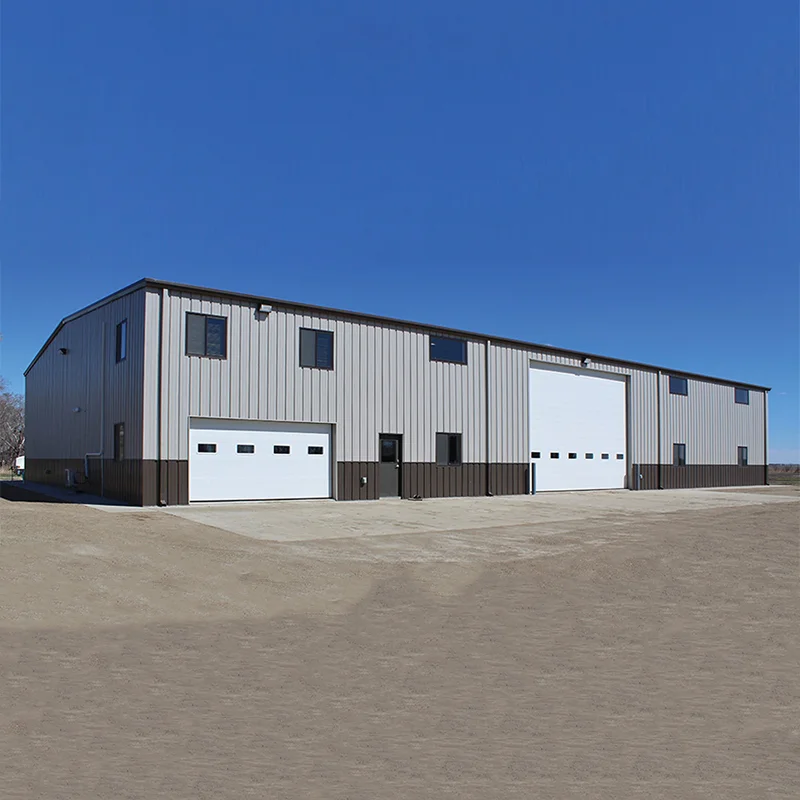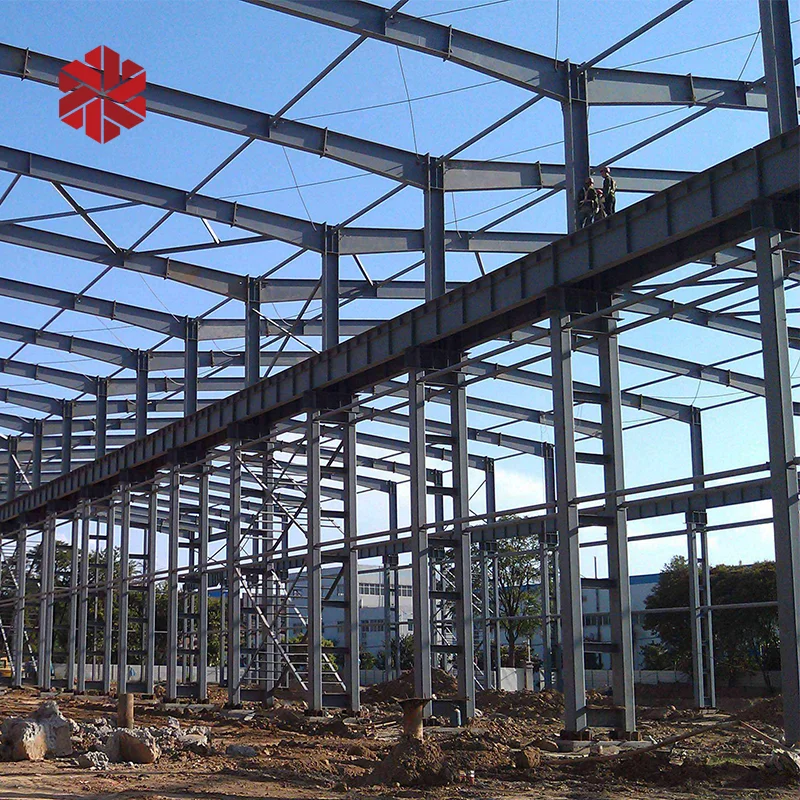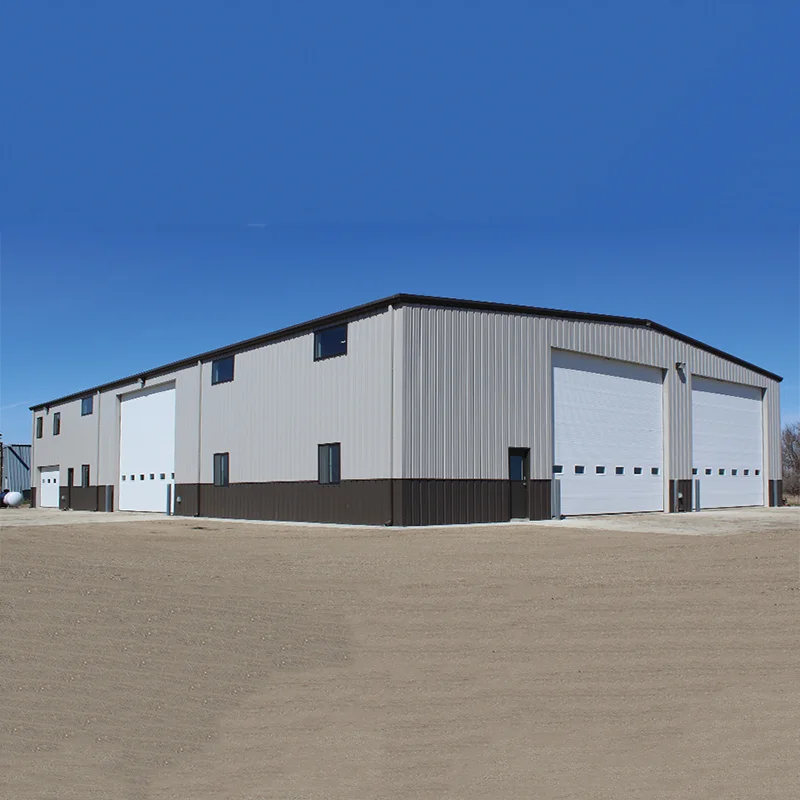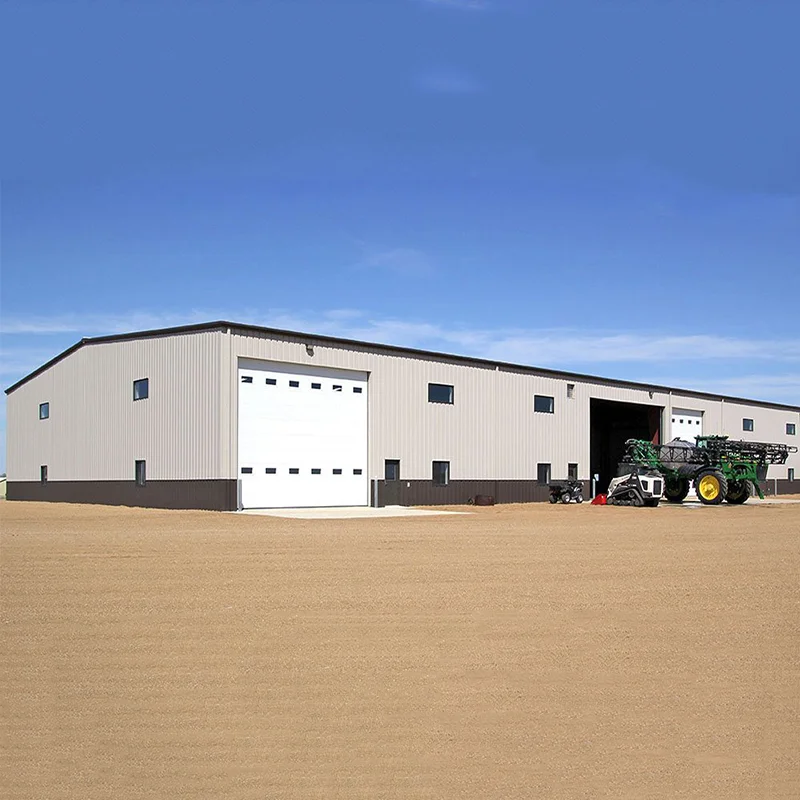Недорогой металлический строительный цех 5000sf сборные хранилища промышленные стальные
- Категория: Warehouses >>>
- Поставщик: Tianjin,Zhenxiangyude,International,Trading,Co.,Ltd.
Поделиться:
Описание и отзывы
Трекер стоимости
| Месяц | Минимальная цена | Макс. стоимость |
|---|---|---|
| Aug-18-2025 | 37.70 $* | 38.16 $* |
| Jul-18-2025 | 30.46 $* | 31.6 $* |
| Jun-18-2025 | 36.83 $* | 37.72 $* |
| May-18-2025 | 36.63 $* | 37.37 $* |
| Apr-18-2025 | 29.89 $* | 30.41 $* |
| Mar-18-2025 | 35.29 $* | 36.10 $* |
| Feb-18-2025 | 35.90 $* | 36.90 $* |
| Jan-18-2025 | 35.26 $* | 36.33 $* |
Характеристики
Product Description
Specification
Type | Steel Structure Warehouse |
Steel Grade | Q355,S355JR |
Column Beam | Welded H column, two layers anti-rust middle gray paint |
Bracing materials | Galvanized C purlin or Galvanized Z purlin, Angle steel bracing |
Wall and Roof | EPS, Rockwall/Fiberglass, PU sandwich panel, corrugated steel sheet |
Floor deck | 688Type 1mm Thickness floor deck and its edges accessories |
Door | Motored roller shutter door |
Window | Plastic steel or Aluminum alloy window |
Surface | Hot DIP galvanized or painted |
Crane | 3T-30T |
Terms | Payment: T/T(30% prepaid as deposit, the balance 70% before shipment) |
Delivery time | 30-60 days |
Shipment | 40'GP, 40'HQ, 40'OT or in bulk |
PRODUCT DESCRIPTION

4 reasons why steel structure is the best choice?
1.Cost savings
Steel requires minimal maintenance, making it one of the most practical building solutions in comparison to traditional building materials.
2.Creativity
Steel allows for long column-free spans and you can have a lot of natural light if you want it in any shape of structures.
3.Control and Management
Steel structure fabricated at factory and rapidly erected at construction site by skilled personnel that makes safe
construction process.
4.Durability
It can withstand extreme forces or harsh weather conditions, such as strong winds, earthquakes, hurricanes and heavy snow.
1.Cost savings
Steel requires minimal maintenance, making it one of the most practical building solutions in comparison to traditional building materials.
2.Creativity
Steel allows for long column-free spans and you can have a lot of natural light if you want it in any shape of structures.
3.Control and Management
Steel structure fabricated at factory and rapidly erected at construction site by skilled personnel that makes safe
construction process.
4.Durability
It can withstand extreme forces or harsh weather conditions, such as strong winds, earthquakes, hurricanes and heavy snow.
STEEL MATERIALS LIST

3D ILLUSTRATION

DESIGN STRENGTHS

PREFAB STEEL STRUCTURE FRAME MODEL

CASE PRESENTATION

TYPE OF STEEL STRUCTURES BUILDINGS

PRODUCT PACKAGING

COMPANY PROFILE

Tianjin Zhenxiang yude International Trading Co., Ltd is a rapidly developed trading company, which mainly export steel structures including warehouse, workshop buildings products including fasterners, hoop iron, angle bar, chanel bar, flat bar and pipes.
The key of our success is best quality and high efficiency. we have a high efficient team who deal with customers' enquiries and solve customers' problems at the first time.our aim is to meet customers needs and wants. we are making great efforts to make win-win situation and sincerely welcome you to join us.
The key of our success is best quality and high efficiency. we have a high efficient team who deal with customers' enquiries and solve customers' problems at the first time.our aim is to meet customers needs and wants. we are making great efforts to make win-win situation and sincerely welcome you to join us.
COOPERATING CUSTOMERS

FAQ
Q1. What Is a Pre-Engineered or Prefabricated Steel Building?
By using steel, prefabricated buildings have a lower structural weight, which adds to their versatility. They also use different framing methods where instead of traditional “I” sections in conventional steel buildings, the sections are tapered. Another common theme with prefabricated buildings is that all structural elements used work together seamlessly, significantly reducing the time needed to build them in comparison to conventional steel.
Whether you prefer to refer to them as “prefabricated,” “pre-engineered,” or “pre-manufactured,” these buildings are an economical alternative to the more conventional building designs and accommodate a wide range of structural needs.
In simpler terms, a pre-engineered steel building is a type of structure where the parts and metal components are prefabricated.This is done by a manufacturer at a plant and created according to the completed building’s design specifications. The components are then sent to the buyer who erects the building at the site.
By using steel, prefabricated buildings have a lower structural weight, which adds to their versatility. They also use different framing methods where instead of traditional “I” sections in conventional steel buildings, the sections are tapered. Another common theme with prefabricated buildings is that all structural elements used work together seamlessly, significantly reducing the time needed to build them in comparison to conventional steel.
Q2. What Are Some of The Best Uses For Commercial Steel Buildings?
Commercial steel buildings can be designed to suit many different functions. That said, they are commonly used as:
* Warehouses
* Equipment storage (mechanical components, machinery, heavy equipment, building and production materials and other tools)
* Distribution and shipment centers
* Car washes and commercial garages
* Open-plan workspaces
* Malls and commercial storefronts
* Commercial office space
* Warehouses
* Equipment storage (mechanical components, machinery, heavy equipment, building and production materials and other tools)
* Distribution and shipment centers
* Car washes and commercial garages
* Open-plan workspaces
* Malls and commercial storefronts
* Commercial office space
Q3.How Much Will I Save By Installing A Pre-Engineered Steel Building?
The cost savings you realize from commercial steel buildings start during construction and extend over the life of the building.Although the price of steel buildings fluctuates with the steel market, you will also save money on labour and other time-based expenses during construction. Many smaller structures are also considerably faster to erect than conventional buildings. Over their life, steel buildings continue to save you money as their maintenance requirements are minimal. They also provide better protection from the weather and elemental damage in comparison to structures made from traditional materials. With additional accessories such as insulation and skylights, they are extremely energy efficient, saving you on heating and lighting costs.
The cost savings you realize from commercial steel buildings start during construction and extend over the life of the building.Although the price of steel buildings fluctuates with the steel market, you will also save money on labour and other time-based expenses during construction. Many smaller structures are also considerably faster to erect than conventional buildings. Over their life, steel buildings continue to save you money as their maintenance requirements are minimal. They also provide better protection from the weather and elemental damage in comparison to structures made from traditional materials. With additional accessories such as insulation and skylights, they are extremely energy efficient, saving you on heating and lighting costs.
